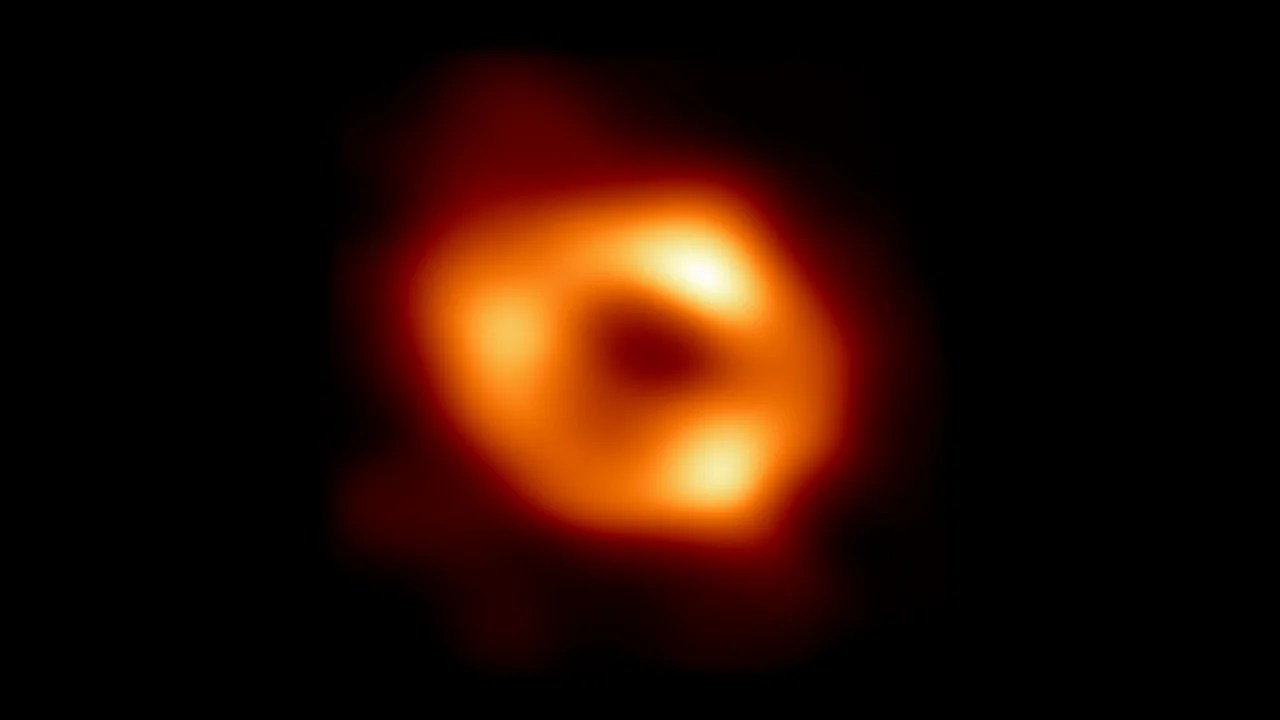(CNN) –– The supermassive black hole at the center of our galaxy, Sagittarius A*, is spinning rapidly, altering the spacetime around it, a new study has found.
Spacetime is a four-dimensional continuum that describes how we see space, combining one-dimensional time and three-dimensional space to represent the fabric of space as it curves in response to massive celestial bodies.
A team of physicists has observed a black hole located 26,000 light years from Earthwith laboratory Chandra X-ray NASA is a telescope designed to detect X-ray emission from the hottest regions of the universe. They calculated Sagittarius A*’s rotation speed using the outflow method, which analyzes radio waves and X-ray emissions found in the material and gas surrounding black holes. study Published October 21 in Monthly Notices of the Royal Astronomical Society.
The researchers confirmed that the black hole rotates, creating the so-called lensing effect. Also known as frame dragging, the lens-tearing effect occurs when a black hole drags spacetime along its spin. said Ruth Daly, lead author of the study.Designed by Professor of Physics, Pennsylvania State University exit method For more than a decade.
Since the discovery of the outflow, Daley has been working to determine the rotation of various black holes. 2019 study It examined more than 750 supermassive black holes.
“With this spin, Sagittarius A* will dramatically change the shape of space-time in its vicinity,” Daly said. “We’re used to thinking and living in a world where all spatial dimensions are equal: the distance to the ceiling, the distance to the wall, and the distance to the floor … they’re all linear, it’s not like one. It’s completely crushed in comparison to the others.
“But if you have a rapidly spinning black hole, the space-time around it is not symmetric: the spinning black hole drags all the space-time with it… it compresses space-time, and in some ways it looks like a ball. A football,” he explained.
Daly said the disruption of space-time is nothing to worry about, but shedding light on the phenomenon would be very helpful for astronomers.
“This is a wonderful tool for understanding the role black holes play in the formation and evolution of galaxies,” he said. “The fact that they’re dynamic entities that can rotate … and then affect the galaxy they’re in is very exciting and very interesting.”
The rotation of supermassive black holes
The spin of a black hole is assigned a value between 0 and 1, where zero means the black hole is not spinning and 1 is the maximum spin value. Daly said that previously there was no consensus on the value of the Sagittarius A* spin.
According to Daley, using a single-out method using information from both the outflow and the material in the vicinity of the black hole, Sagittarius A* was found to have a spin angular momentum value between 0.84 and 0.96. when M87*A black hole Virgo constellation It is 55 million light-years from Earth and has a spin value of 1.
While the team found that both black holes rotate at similar speeds, M87* is much larger than Sagittarius A*, so Sagittarius A* has less distance to travel and spins more times for each revolution of M87, Daly said. .
Sagittarius A* “spins so fast (comparatively), not because it has more spin angular momentum, but because it has less distance to travel when it spins,” Daly explained.
Black holes and galaxy history
Knowing the mass and rotation of a black hole helps astronomers understand how it might form and evolve, Daly said.
Black holes resulting from mergers of smaller black holes typically have a lower spin value, he said. Dejan Stojkovic, professor of cosmology at the University at Buffalo, who was not involved in the study. However, a black hole formed with surrounding gas accretion would have a higher spin value.
He noted that the speed at which Sagittarius A* is rotating would indicate that a significant portion of the black hole’s mass comes from accretion.
“The question of whether our central galactic black hole is rotating or at what speed is very important,” Stojkovic said in an email.
“Ultimately, we want to measure the properties of our galaxy’s core as best as possible. This way we can learn about the history and structure of our galaxy, test our theories or infer the existence of some interesting and intriguing objects like wormholes,” said Stojkovic. 2019 study On hypothetical structures.





